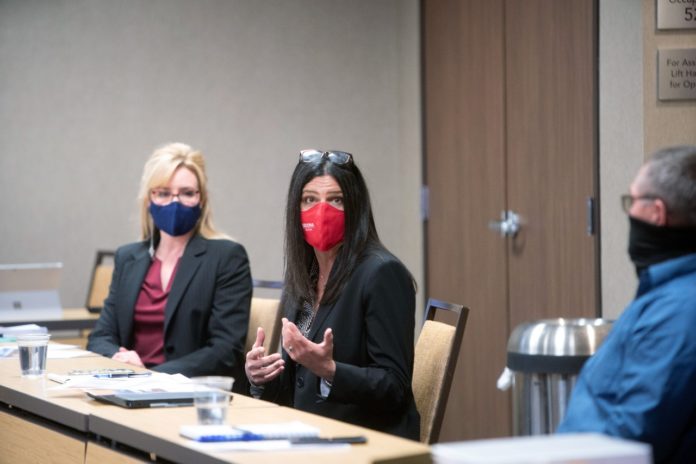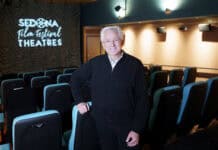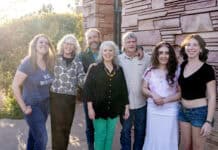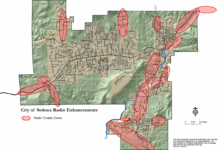
The message was clear that in order to address questions like “How much tourism is enough?” and “How do you find that balance that serves both residents and visitors?” the Sedona City Council and the Sedona Chamber of Commerce must continue working as a team.
Both teams were present on the afternoon of Thursday, Feb. 4, as part of the city’s annual council retreat, which is held shortly after the first of the year. For the past three years the chamber has been invited to take part as a way to update council on the status of the tourism economy and to share the chamber’s priorities for the upcoming fiscal year.
Leaders of both groups also reviewed the goals of the Sustainable Tourism Plan.
No budgetary figures were presented by the chamber for Fiscal Year 2021-22 — that will take place in the spring.
“We decided some time ago that starting that process in April and trying to conclude by the end of our fiscal year, which is June 30, did not leave a lot of time to collaborate,” City Manager Justin Clifton said. “Frankly, this put the council in more of a responsive mode when seeing something for the first time, while so close to the end of the fiscal year,”
This year’s meeting — which lasted four hours — also served as an introduction of sorts for Candace Carr Strauss, the chamber’s new president and CEO. She comes to Sedona after having served as the chief executive officer of the Big Sky Chamber of Commerce & Visit Big Sky, in Big Sky, Mont., for the past two years. Her first official day will be later this month. Marketing Director Michelle Conway has been serving as the interim president and CEO since the departure of Jennifer Wesselhoff, who accepted a job late last year in Park City, Utah.
“As we come together today, I want to say that our purpose is a mutual one and for what’s best for Sedona,” Carr Strauss said, noting that she was honored to be chosen for the job. “We’re all here because we care and why we’re willing to listen to everyone’s perspective — whether it’s something we agree with or not.”
As a result of the COVID-19 pandemic, she said chambers of commerce and cities across the country have had to deal with volatility in 2020 and the uncertainty of what 2021 may hold.
“As far as the status of where we are today, sometimes our memories can be very short-termed,” Carr Strauss said. “What we’ve seen over recent months is a coming back to normal in terms of occupancy but what we can’t forget was the huge downturn in our peak quarter of visitation in March, April and May.”
While hotel occupancy fluctuated in 2020 and was down from the previous year, daily room rates continued to rise. Carr Strauss said while Sedona’s drop in tourism was more dramatic than most in the country, the rebound has been the flip side of that.
“This is what we’re speaking to in terms of what we’re trying to do as an organization,” she said, referencing the average daily rate increase and their desire to bring people who will stay longer and spend more money locally.
On those lines, she later said, “The world is not what it once was. Our target audience and target markets may not be the same moving forward. The hospitality and travel industries have been turned upside down.”
Councilman Bill Chisholm said he understands that in order to keep Sedona viable as a tourist destination, the area has to maintain that interest among potential visitors. But it is a balancing act.
“We have to contrast that with the fact that we have evidence of not advertising or marketing and still being successful — if success is gauged by sales tax and bed tax revenues that come to the city,” he said. “I realize there will be winners and losers no matter what. Some businesses will thrive in that environment and some will experience pain in that environment.”
For years the city has looked at ways to diversify Sedona’s economy and its reliance on tourism. That’s proven difficult for a variety of reasons but as it was pointed out, tourism has always been Sedona’s bread and butter and more than likely will continue to be.
“We understand that 77% of our overall sales tax comes from visitors,” Clifton said. “We are a tourist economy. When I first arrived, Jenn [Wesselhoff] had taught me early on that we have three economic drivers in Sedona — ‘tourism, tourism and tourism.’”
Mayor Sandy Moriarty echoed Clifton and said, “You can hardly go anywhere in the country or the world where you won’t find people who know of Sedona. We’re out there and the cat is out of the bag, as they say. It’s not going to go back in. We have tourism as our economic engine, whether we like it or not.”
In addition to Chisholm, others on the council suggested the chamber should pump the brakes a bit for a while in terms of marketing and advertising and instead, investing those funds in sustainable tourism or issues that residents can become involved with. But members of the chamber board, including President Lonnie Lillie, expressed concerns about doing so. When people begin feeling better about flying, that will open up more destinations and thus, more competition for that tourism dollar.
“We are doing well because of the marketing we have done in the past,” he said. “But to say, ‘Let’s just cut it off and see what happens’ is scary. We hear you as part of the partnership we share. We will come back before you with a plan. A plan that is respectful to us, respectful to you and respectful to the citizens.”





















